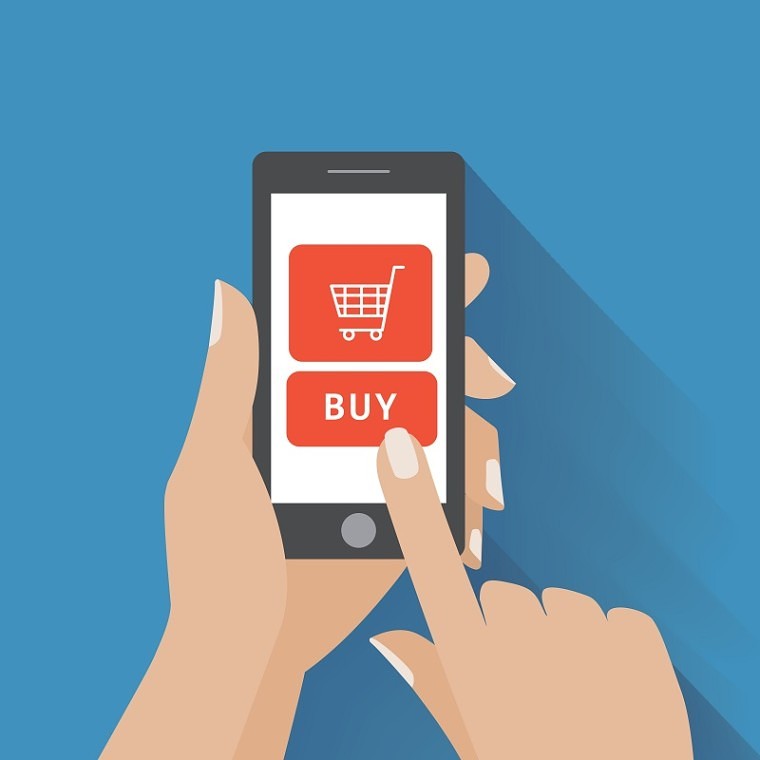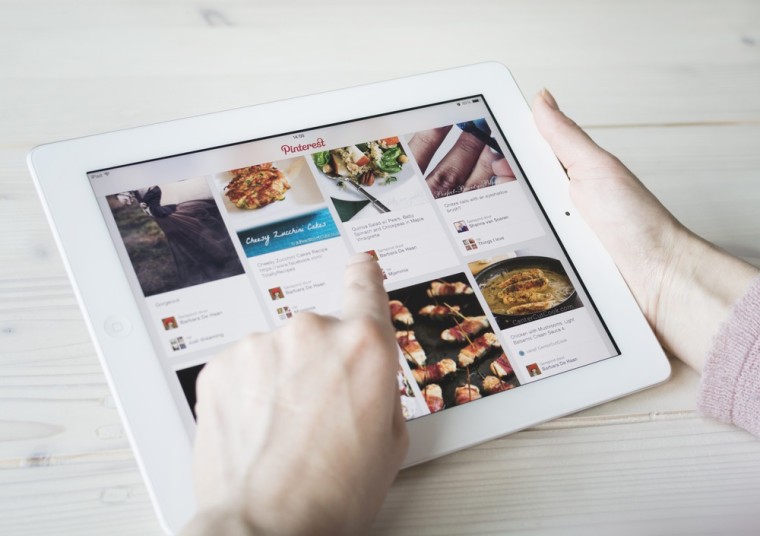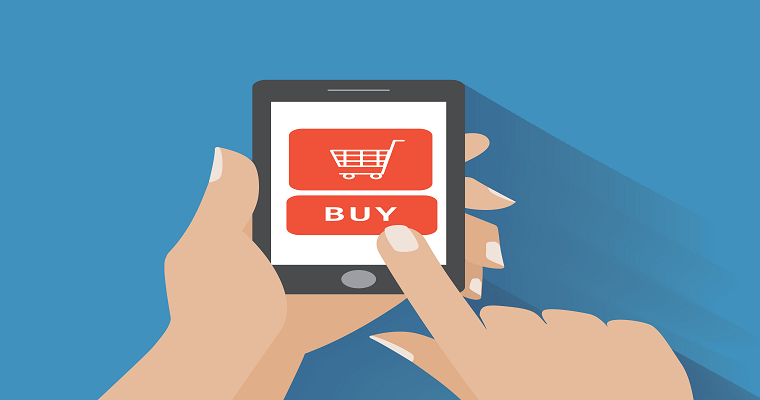Raise your hand if you’re guilty of spending a large chunk of your free time on your smartphone each day. Most of us are, it’s okay to admit it.
The problem for many e-commerce marketers is they know this, but the numbers don’t support it. ComScore data shows that while 60% of all online retail browsing happens on phones and tablets, only 15% of sales occur on these devices.
But why? I decided to reflect on my own mobile behavior to gain a better understanding.
On my phone last week, I searched for running sneakers on my commute to work, and a gift for my nephew’s 1st birthday when reading in the park, but did I go through the trouble of pulling out my credit card and punching in the numbers on my teeny-tiny screen (I have the iPhone6, it’s not that tiny, but still)? Absolutely not.
Later in the work week I purchased the shoes on my desktop computer when my credit card was more readily available, and instead of buying some of the cute gifts I saw online, I opted for a toy that I found in one of the quaint shops along the water in Maine during a weekend getaway.
This is all fine and dandy for me, but for those e-commerce businesses I was originally exposed to, it sucks. They gained a click, and lost a potential transaction.

Google gets this, and feels your pain as an e-commerce marketer, and it wants to eliminate the friction of purchasing on mobile, which leads to – drum roll please – Google’s BUY BUTTON! Rumors of the long-anticipated buy button were floating around for quite sometime, but on July 15th Google confirmed that the buy button (which they’re referring to as “Purchases on Google”) is being tested.
The buy button allows mobile searchers to search, and buy directly through Google without having to pull out a credit card, since Google will store card details after the first purchase to make the process seamless.
“Kordestani (Google’s chief business officer) described the product launch as a way to remove friction for users so they buy more things online. Some 90% of commerce is still offline,” reports Liz Gannes of Re/code.
Ah! The ability to buy directly through the SERPs, it’s a dream come true! Or is it? Many marketers are less than thrilled because they fear Google’s trying to become a retailer, crush their brand loyalty, and steal their business altogether.
Deep breaths, marketers, deep breaths, this is not necessarily the case.
At SMX Advanced in Seattle, I was lucky enough to hear directly from Google’s VP of Product, Jerry Dischler, who confirmed that Google is not attempting to become a retailer.
“The buy button is really about mobile and driving mobile transactions,” says Dischler. “In retail, mobile conversion rates are lower – keyboard input is difficult, sessions are shorter, you don’t always have payment credentials available.” Dischler made it clear that Google intends to HELP, not hurt, e-commerce businesses by focusing on the 5% of the time that really matters when people are making purchases decisions, and make that really great.
Now that we have that settled, what should you, the e-commerce marketer, do to prepare for the coming of the buy button?
Ensure You Have a Solid PPC Mobile Strategy in Place
According to The Wall Street Journal, buy buttons are initially solely for mobile searchers alongside paid search ads, not organic listings. This is critical to note. E-commerce marketers should already be all over their paid search game with up-to-date shopping ads, but now the focus on the mobile searcher needs to drastically heighten.
Once “Purchases on Google” is available to all retail advertisers, I predict the opportunity to increase conversions will be significant and game-changing for many e-commerce businesses. It might not not be the ideal way you want shoppers to purchase, but it is another way, so you should be taking full advantage of this new feature once it’s released.
Keep Past Purchasers Engaged with Your Brand
Acquiring returning customers and brand ambassadors is essential to the success of many e-commerce sites, but with the ability to buy directly on the SERPs, it is going to become more and more difficult for e-commerce marketers to build customer loyalty. “Google’s move may cause concern from retailers who are keen to maintain a close relationship with customers,” says BCC News.
“The product pages where Google handles the purchases will be heavily branded for the retailers selling the items, and any recommendations for other things to buy will be from the merchant,” says the WSJ, which may ease retail marketers’ concerns over losing branding control.
Aside from branding Google pages, another way to ensure your customers buy from you is to remarket related offerings they are likely to purchase. Tag them once the purchase is made, and make sure you have a thorough strategy in place to reinforce the hopefully positive experience they had purchasing with you.
The WSJ also confirmed that Google will allow consumers to sign up for the same marketing programs they would have been exposed to through an e-commerce site. So, relax marketers, you’ll still be able to gain additional information like emails.
This could be a difficult hurdle to tackle, but with tools like remarketing, email marketing, social strategy, and a solid and seamless customer experience, you should be able to attain some loyal, returning customers.
Think Outside of Google & Your Website to Reach as Many Shoppers Possible
As you may know, Google is not the only one jumping on the buy button bandwagon. Facebook, Twitter, and Instagram all have some type of buy button in the works. Pinterest rolled out buyable pins on June 30th.

“For platforms like Pinterest and Instagram, the element of inspiration can play a huge factor in people’s desire to buy what they see, especially when it’s arranged elegantly in pins and photos,” says Hilary Milnes of Digiday.
While this is exciting, it’s also nerve-racking to think of the impact it could have on the way people shop online. While it might feel like the customer relationship is threatened, these changes also open up an opportunity to connect with more shoppers through various platforms aside from your website alone whom you may have not otherwise reached.
Where the growth opportunity really lies is, again, mobile.
“While mobile commerce grew more than three times as quickly as commerce on desktop websites in the first quarter, the percentage of people who go on to buy something after clicking an ad is lower on phones than on desktops,” says Re/code’s Joshua Del Ray. “But if you let someone buy a product directly from the ad on Twitter, Facebook, Pinterest or Google – through, say, a Buy button – the thinking is that conversion rate will improve. And when conversion rates improve, advertisers buy more ads.”
Del Ray also goes into the potential problems that could arise, such as shoppers becoming comfortable purchasing through social and search networks, as well as inventory management for retailers. Syncing product catalogs, order management, and payment systems with these networks could create problems and delay the processing of orders. In addition, targeting the right people at the right time could pose a challenge.
“For now, it is working with e-commerce companies Demandware and Shopify to help sign up brands and small businesses they work with, but this approach only goes so far,” says Del Ray.
Final Thoughts
So, could the takeover of the buy button be beneficial or detrimental for e-commerce sites? This remains to be seen, but one thing is certain: e-commerce marketers need to be prepared to jump on the buy button bandwagon to see how it impacts their growth opportunities.
“Soon enough, there will be a ‘buy’ button everywhere you look. Good luck silencing the urge to impulse shopping,” says Mashable’s Seth Fiegerman.
Images Credit:
Feature & Image #1: Olga Lebedeva / Shutterstock.com
Image #2: Twin Design / Shutterstock.com





